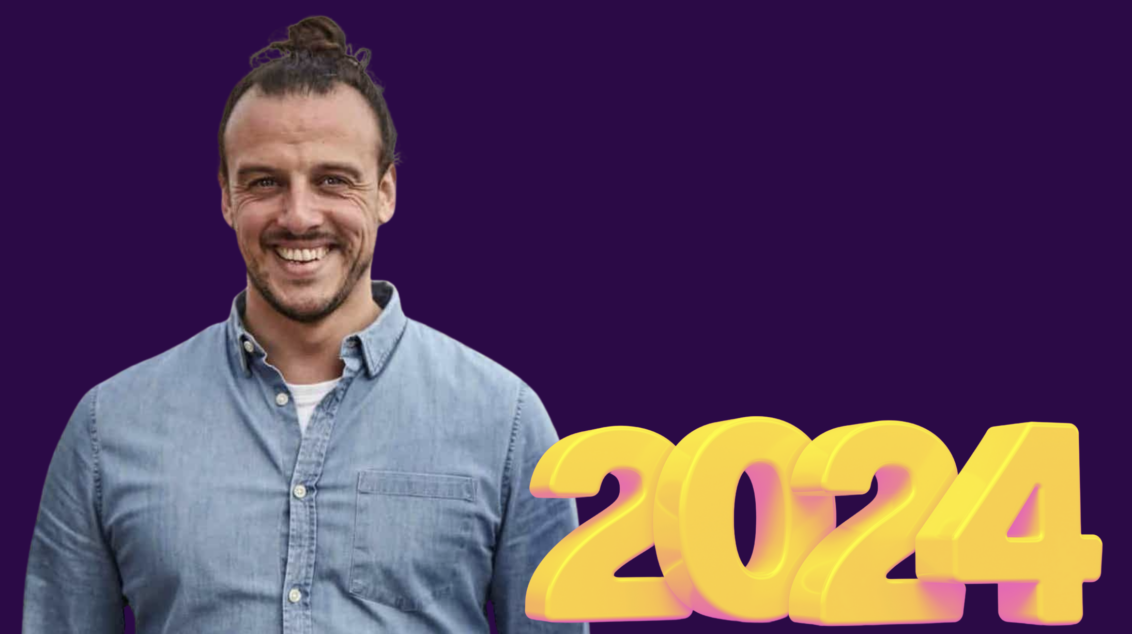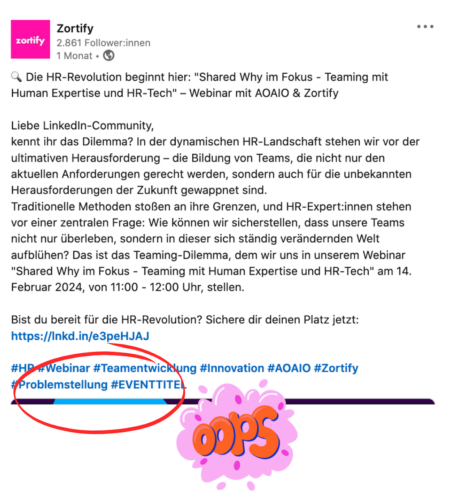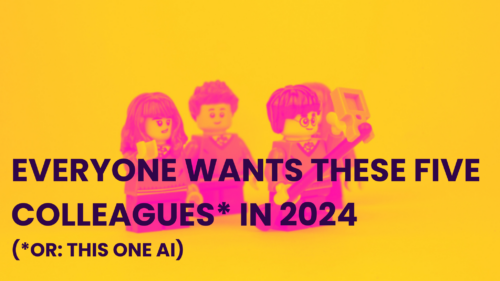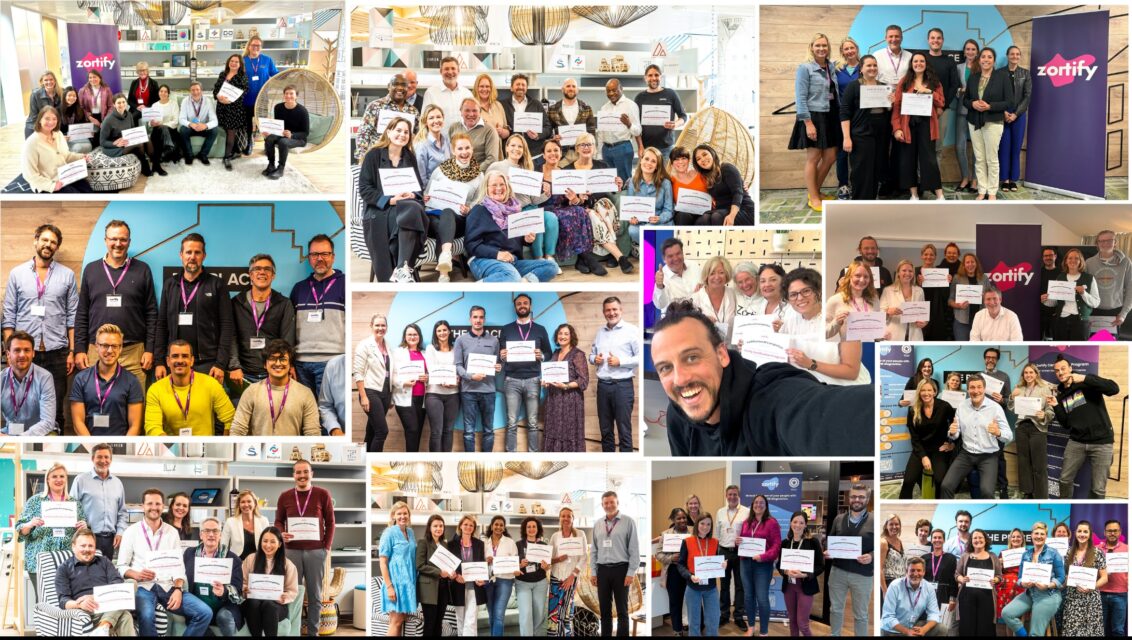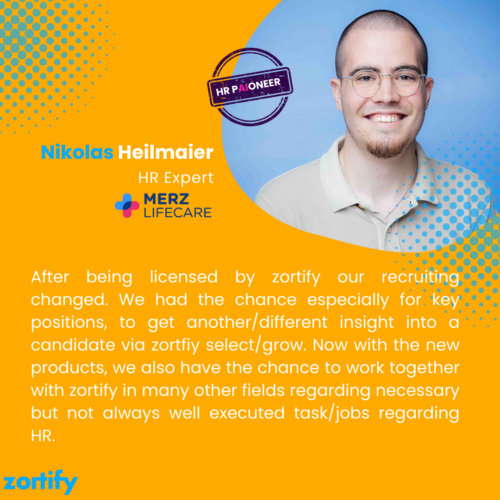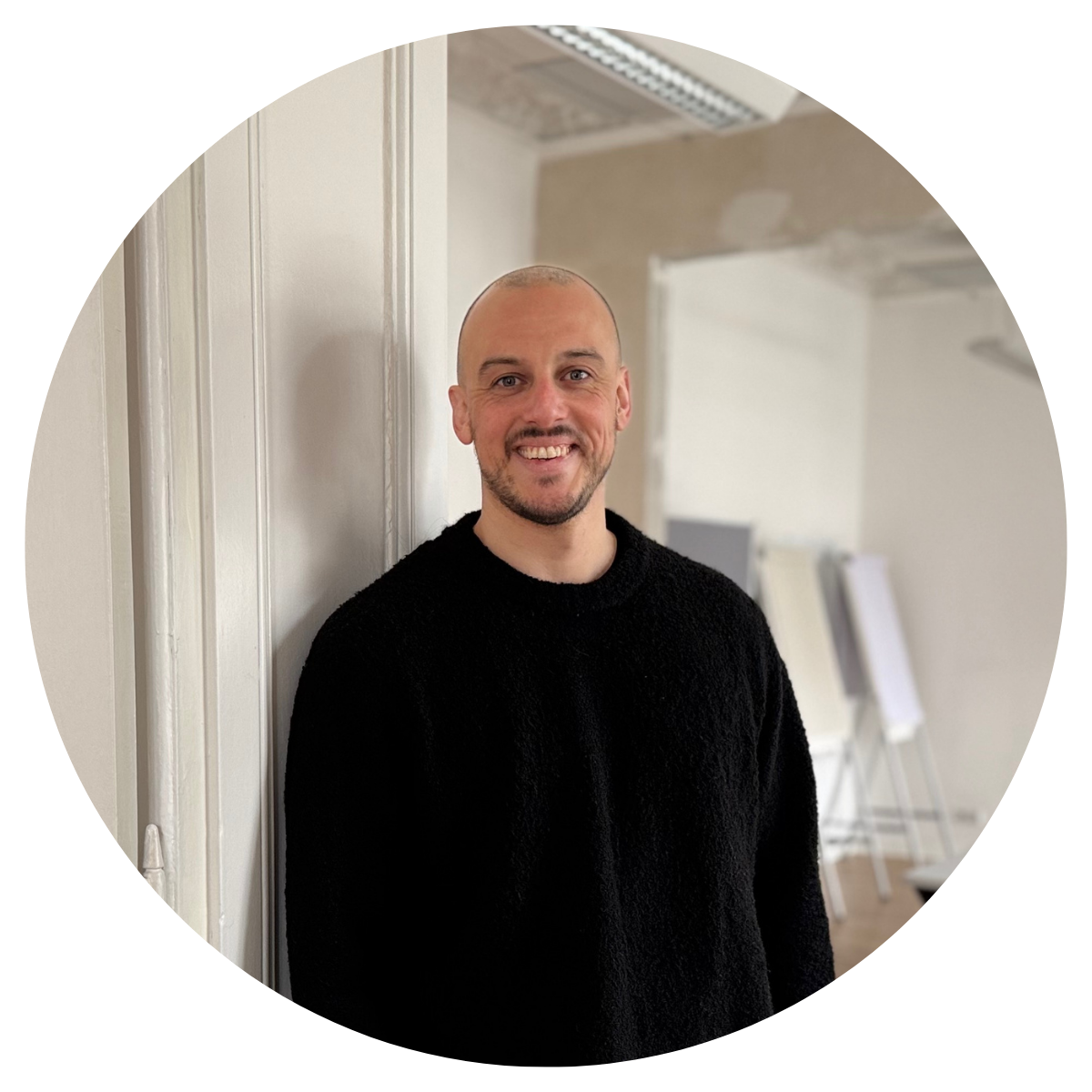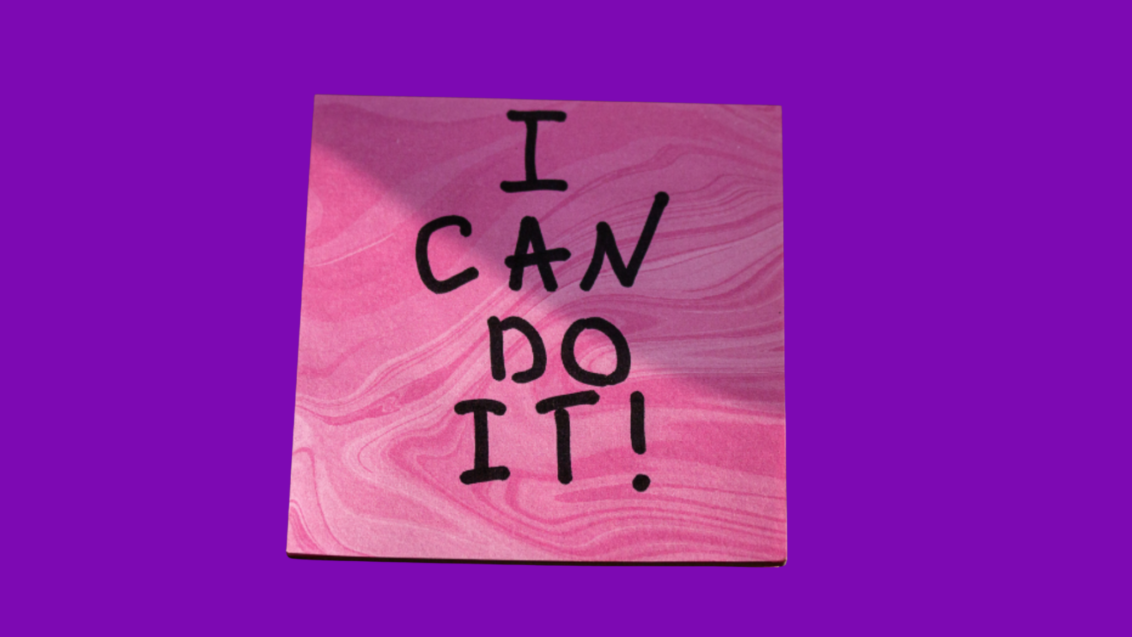Year 2 Post-GPT: How My Year Was Shaped and Why Work Must Remain Human
Florian’s 2024 Review
December 2024 – or, in the new chronology, Year 2 Post-GPT – marking two years since the go-live of the first version of ChatGPT. Requests like “Write a rhyming speech for my aunt Hannelore’s 60th birthday” or “Draft an outline for a whitepaper on the impact of generative AI on talent acquisition” – OpenAI’s chatbot has become an indispensable tool for many since November 2022, serving as both collaborator and colleague. Imperfect yet always available, it helps tackle writer’s block or tight deadlines. This past year, we at Zortify leaned on ChatGPT again for tasks like crafting social media posts.
Sometimes, though, it’s not perfect, as we’ve seen. 😉
The best posts? They came from us—straight from the heart, prompted by passion.
Hyperfocus and Hyperteams, Thanks to AI
December 2024 also marks six years of Zortify and two years of unwavering focus on what we believe will have the greatest impact on modern HR practices: AI-driven HR diagnostics. Our goal is clear: achieve an unprecedented level of accuracy in recruiting and development. This means fewer mis-hires, more productive teams, and the right people in leadership positions.
This focus sparked significant internal changes – some positive, some challenging. Team members left, others joined. Leveraging our own technology, which offers personality diagnostics and objective insights, we’ve built a dream team. And we’re growing. If you’re considering a career change in 2025 – especially in Sales – get in touch!
The Bright Side of AI
In December 2024, many businesses are still stuck in the old era – 2022 pre-GPT. While AI adoption has grown this year, it’s mainly large corporations taking advantage of the new tools:
- 48% of large enterprises use AI, compared to
- 28% of midsized companies and
- 17% of small businesses.
For many, the main obstacle remains a lack of knowledge. Clearly, we’re still in the early stages of widespread AI adoption in the economy.
However, in social media, the story is different. Fake news and deepfakes have become so pervasive that they threaten democratic systems. It’s a stark reminder of AI’s power—unfortunately, in its darkest form.
On the bright side, AI is also enabling remarkable things:
- People relieved of tedious routine tasks,
- Candidates finding jobs that align with both their skills and personalities, and
- New, exciting roles emerging at the intersection of human and technological expertise.
Everyone wants these five colleagues* in 2024 (*or: this one AI)
While 2023 (Year 1 Post-GPT) focused on fears about job displacement, 2024 brought the realization that AI won’t replace humans in many areas; instead, it’s making human contributions more crucial than ever. Good work still hinges on collaboration – with other people and within diverse teams. It thrives on inclusion, objective analysis, and respecting individual uniqueness.
Looking ahead to 2025, the advance of AI will make the human element indispensable.
Why the Human Element Matters
1. AI Makes Human Expertise Absolutely Essential
In an age of ever-shorter innovation cycles, failing forward has become essential. Success lies in learning as we go, guided by those who are already a few steps ahead – those who’ve either learned from their mistakes or designed predictive models to avoid them.
At Zortify, we aim to be these forward-thinkers, guides, and shock absorbers for our clients. We teach the skills needed to use AI technology effectively, enabling businesses to focus on their unique challenges.
Incidentally, this is becoming a legal requirement in 2025. The EU AI Act mandates that employees working with AI possess adequate skills. With our certification program, we’re helping clients easily transition into this new era.
2. Culture Development Remains a Human Task
2024 has proved once more: culture first, AI second. Technology only succeeds within a supportive culture. Toxic work environments or outdated mindsets aren’t fixed by AI alone.
At Zortify, fostering a respectful and inclusive culture remains a core value. For me this includes taking on seemingly trivial tasks when necessary – whether it’s organizing meals for a certification event or stepping in to fill an unexpected gap.
At the same time, in view of our realignment and the associated changes since 2023, it was important to me to highlight and celebrate the achievements of our team. A good example of this and an absolute highlight in 2024 was our Zortify Connect Day, celebrating both our clients and our team. Hearing clients openly share their positive experiences with us was a testament to our team’s efforts and a major motivator.
There will also be a CONNECT Day in 2025. Pre-Registration has already started.
3. Leadership Requires Human Intuition, Clarity – and Free Calendar Time
Good leadership remains inherently human. It’s about knowing when to guide, when to step back, and when to empower team members. AI-based diagnostics can help identify and develop leaders with these qualities but cannot replace the human touch.
In 2024, I focused intensely on saying “no” to distractions, ensuring alignment with our priorities. This required clear communication – an area I worked to improve by preparing more thoroughly for meetings and fostering dialogue through active listening.
In my view, active listening remains the number one leadership skill. AI can support this, for example by identifying socially desirable behavior as such and providing insights that go beyond first impressions and the obvious. However, it is no substitute for an open door and an open ear policy fostered by leaders. Personally, I have consciously taken more time for feedback and review meetings in the past year and invested in our corporate culture.
An example of that was the implementation of “Open Calendar Time” on office days for spontaneous conversations and personal exchanges. These moments strengthened collaboration and trust within our team.
Conclusion
AI profoundly shaped our lives and work in 2024. In 2025, even more businesses and individuals will harness its potential. Still, collaboration will remain fundamentally human. Successful HR departments will blend deep AI expertise with the empathy and nuance that only humans can provide, using technology to elevate their impact.
At Zortify, we’re proud of our progress in 2024 – thanks to our amazing team. As the year ends, I’m filled with gratitude and excitement for the connections we’ll forge in 2025.
Happy Holidays!
Prof. Dr. Florian Feltes
Prof. Dr. Florian Feltes is co-founder and co-CEO of zortify and a forerunner in AI-supported HR innovation. Together with his team, he develops intelligent personality diagnostics and helps companies identify the perfect candidates—without expensive assessments and without bias. His vision: a world in which every company can effortlessly form high-performance teams and create work environments that allow human potential to flourish.
13 + 1 Bias in Recruiting: How to Recognize and Overcome Them to Find Truly Suitable Candidates
Bias – unconscious thought patterns – can influence our perceptions and decisions. In the context of recruitment, bias can result in unfair evaluations of candidates, leaving potential untapped. This guide outlines common bias, their impact, and strategies to avoid them.
Between Trump, zero-motivation-days and the “Robin Hood of talent”
Donald Trump will be the next US president. And in social networks, the concept of paid “zero-motivation-days” is being discussed, that is days off for employees without them having to call in sick or take vacation days. Two topics, although of different dimensions, which for us lead to one conclusion: Companies must start to face their responsibility!
Hierarchy with AI rather than everyone at eye level?
Companies promote flat hierarchies and a culture at eye level in order to attract skilled workers. That sounds very progressive and good for employees at first glance. But why do so many people still leave the company after a short time? Why is retention, i.e. retaining talent in the organization, still one of the major challenges?
Good leadership: With self-reflection and unsympathetic filter
by our CEO Florian Feltes
A good leader – is that something you are or is that something you become? – Let me put it this way: you are one if you are willing to become one. In other words, leadership requires a willingness to develop. Leading always means learning to lead. It is an ongoing process that is never finished, especially in the fast-paced world we live in.
I consider three spheres to be important in which leaders should continuously train themselves:
- reflection on my own current state,
- my own development process,
- the development process of those I lead.
These spheres do not necessarily build on each other. Rather, I am constantly moving between them, sometimes more in one, sometimes more in the other.
Leadership starts with myself
Let’s start with the first sphere, my own current state. Dealing with this usually becomes more urgent when things are not going well. When I notice that I keep falling into certain counterproductive behaviors, for example. Recently, a very interesting article was published in DIE ZEIT. It deals with the question of whether and how you can change your own personality or certain characteristics. The author refers to findings from psychotherapy research and thus to four essential steps for making changes to oneself:
- Awareness of goal and reality: Where do I (as a leader) want to go (goal) and what is currently holding me back (reality)?
- Awareness of my own feelings: What situations trigger what in me and why?
- Conscious “artificial” behavioral change: Practicing new behaviors, even if they don’t feel natural yet.
- Getting feedback from others: Ongoing reality check.
The common thread in this sphere is self-reflection. Knowing and leading yourself is the starting point for leading others well.
Resisting the temptation of linear thinking
The second sphere comprises my own development process as a leader in the sense of “leadership by doing”. Just like personal development, this process is also ongoing. It’s about consciously “taking the lead” again and again when the situation requires it. And, before and after that, moving within the organization and the outside world with a questioning and curious attitude:
- How are my employees, our customers, the competitors doing?
- What drives them?
- What can we do differently and better? Or rather: what could we do differently and better, as leaders should think big, have a vision in mind or be able to develop one.
To do this, it is helpful to keep broadening my perspective, to move in new contexts, to surround myself with people who do completely different things than me or the organization I work for.
I also train myself to recognize trends and patterns and am careful not to think too quickly in simple cause-and-effect relationships. Because the world is complex. And the flood of information and data sometimes doesn’t make it any easier. What helps is a systemic way of thinking that makes it possible to recognize the interplay of different dynamics and resist the temptation to think too linearly (X is the cause of Y and that’s it). This includes the willingness to realign myself in this system (what to keep doing, what to start doing, what to stop doing), to look at the system and my role in it from the outside and to search for new ways to make it work.
People and data skills
This in turn requires me to remain open to change. But also to take along those who have a completely different mindset than me. For me personally, the latter is one of the most challenging parts of leadership: actively engaging not only with those who are similar to me. But also and above all with employees who think and work very differently and have very different challenges than me. Good, unbiased data, generated with the help of artificial intelligence, can help here. This comes with another important leadership skill, though: Data competence. I.e. the ability to analytically and critically engage with data and derive the right conclusions from it. For example with regard to the individual potential and development of my employees. Which brings us to the third sphere: “actual leadership” in the sense of my leadership role in direct interaction with the people in the organization.
Leading and letting others lead
I keep asking myself when I, in my executive role, should actively take the lead and when it is better to let others take the lead. For me, this is the core of modern leadership. In which leadership is not based on a formal position, but rather unfolds situationally. In the face of the complex interplay of people, markets and global developments, the knowledge and experience of all employees is valuable for making good decisions.
Everyone can do or knows something that someone else cannot do or does not know. So anyone who wants to take responsibility for solving certain tasks and take the lead must be given the opportunity to do so. Decision-making power can vary depending on the task and project. It is no longer linked to the position, but to the competence for the current task to be solved. For example, a new employee can lead a project if he or she has the necessary know-how. While the senior manager only assists in this project.
Leadership Culture
This requires a leadership culture in which people have the confidence to take the lead if, for example, they notice negative developments in the organization or a project is set up that requires their expertise. Such a culture is created above all by an empathetic, well-informed leader who is capable of reflection (see spheres 1 and 2). Their goal should be to make themselves as dispensable as possible in day-to-day operations. This requires employees to know the framework in which they operate and the degree of freedom for situational leadership within this framework. As a leader, I need to decide where to define hard criteria that give employees guidance when making decisions. And where it is possible to leave decisions open so that employees can negotiate things with each other and individual team members can take the lead themselves.
Thank you, unsympathetic filter.
Stimulating and supporting these processes is also important in order to bring up a new generation of leaders who can develop further in the three spheres mentioned. Employees who are particularly well suited to executive roles due to their personality traits can be identified during the application process with the help of smart AI technology. At the same time, AI generated data helps to ensure that people with toxic behaviors, who according to my experience are neither interested in self-reflection nor have great empathy or special interest in the strengths, wishes and abilities of their colleagues, fall off the grid at an early stage. Technology with a built-in “unsympathetic filter” for sure will not make the perfect executive team by magic. But it does make a significant contribution to ensuring that the right people can start to become leaders at the right time.
Prof. Dr. Florian Feltes
Prof. Dr. Florian Feltes is co-founder and co-CEO of zortify and a forerunner in AI-supported HR innovation. Together with his team, he develops intelligent personality diagnostics and helps companies identify the perfect candidates—without expensive assessments and without bias. His vision: a world in which every company can effortlessly form high-performance teams and create work environments that allow human potential to flourish.
Empowered teams: doing the right thing (instead of doing everything right)
What is more important on the job – doing things right or doing the right things? – Most people will probably answer “both”. Nevertheless, in the context of changing corporate cultures, it is worth thinking about this question in its absolute either-or variant.
Recruit the curious!
“We run this company on questions, not answers.” This sentence comes from Eric Schmidt, Google’s former CEO. It makes it clear which characteristic the company values most in new employees: Curiosity. The recruiting strategy is correspondingly consistent: when the company was looking for engineers, it published a huge billboard with a riddle.
The self-made skills shortage
Why should we analyze applicants in depth if we have no choice about who we hire anyway? We hear this question a lot. It reflects the frustration many companies feel about the lack of skilled workers. And rightly so? – We say: Yes and no. For one thing, we think that the shortage of skilled workers is not a “force of nature” that companies are helplessly exposed to.
“We are not looking for consultants, we are looking for people who fit in well with us.”
Tom Ritsch, Co-Founder of AOAIO
“We are not looking for consultants, we are looking for people who fit in well with us.” – Interview with Tom Ritsch, Co-Founder of AOAIO
Hi Tom, this week we’re looking at the question of why companies should even bother assessing candidates in depth if they don’t have much choice anyway. What would be your spontaneous answer to companies that think this way?
This is probably more about internal and external employer branding. Even if it seems that you can’t find suitable employees, this is exactly what you should be focusing on. Companies must always work on positioning themselves on the market for existing and potential employees. Employer marketing is the key to sustainable success here.
When it comes to the skills shortage, we see different perspectives: some say the shortage is real, while others believe that there are enough people to do the job, but the antiquated structures in companies prevent them from working efficiently. Partly because they are not working in the positions or roles that suit them. Do you share one of these perspectives or do you have your own?
The shortage is partly real, but often a good excuse. In my opinion, it’s about doing an excellent job at all levels. Yes, I also believe that there are enough suitable employees (as always, exceptions prove the rule), but recruitment is still often wrong. Companies need to learn to focus more on the personality to see whether someone fits into the company and the team. Of course, if someone needs certain skills for the job – languages, programming, finance, etc. – they have to have them. But for me, the focus is on the person and the fit. At AOAIO, for example, we are not looking for consultants, we are looking for people who fit in well with us and who I would take with me to the customer any time. You can learn a lot in our job, but empathy and social skills must be there, as well as entrepreneurial potential. So I agree with the statement that it is outdated structures that prevent us from finding suitable employees. In the first place, companies are still searching as they did 20 years ago (it’s a miracle that they don’t still advertise in newspapers) and secondly, the processes and requirements are no longer up to date.
At AOAIO, you support companies in transformation processes. What challenges do these companies share and what differences are there, perhaps with regard to different industries?
What all companies share is the great challenge of digitalization and optimization and the enormous speed that is required. In contrast to the financial industry, where the message has gotten through, industrial companies in the SME sector are struggling enormously with these changes and the necessary investments. The core problem is still that the companies are doing well, perhaps too well, and therefore do not yet see the need for change. There are often people at the top who grew up in a different era and function differently, which is very dangerous for these companies. But often the core problem is that they do not know how to proceed. Who can I trust to do what is really important and necessary? Who understands my needs and who just wants to sell me software. This is something we often struggle with, or come up against when the wrong decisions have already been made. The digitization requirements are actually the cause, because instead of looking at the topic holistically – why do we need what exactly at what point and how does this help us to become more successful (digital roadmap approach) – individual processes are backed up with new software and thus adjusted. The process is rarely considered end-to-end and the customer perspective is all too often overlooked. The result: frustrated employees, dissatisfied customers, bad investments. That’s why I love to show the basic formula of digitalization:
OP + NT = EOP → Old Processes + New Technology = Expensive Old Processes
This means in one sentence: With all the digitization hype, one must not forget that the processes have to be adapted!
As a consultant you are specialized in “human transformation” in an organizational context. From your perspective, do the organizations need to change or the people?
That’s an interesting question. First of all, it’s up to the managers. Just because you read a book about New Work during the vacations doesn’t mean the organization will change. Organizational development has become a core issue and this includes taking people with you, involving them and giving them more responsibility. However, this does not happen overnight, it is a process. It always starts with self-reflection. So the answer is: everyone has to change and be prepared to do so.
How do organizations find the people who are right for them?
To do this, organizations first need to know who they are. What is the culture of the organization, what values are being lived and what makes it special? It is essential to reflect on the company. Just because values are written somewhere on the wall does not mean that they are actually being practiced. A cultural analysis or simply a suitable employee survey helps enormously. If it is clear what makes you tick you can look for suitable people on the market and place your messages in line with the target groups. Of course, for larger companies this can mean having several structures and approaching the market with a variety of approaches in order to position themselves. I address construction workers differently than HR employees.
Looking at the younger generation: How have career requirements changed and how can companies adapt to this?
I don’t quite know if I’m the right person to answer that. There are specialized companies set up by young people to answer these questions for established companies. I personally believe that it has changed massively and will continue to do so. I think it will move more towards a hire-on-demand-concept, which will make the human fit even more important. Project teams will be organized like you select the right players for a specific task in team sports. Careers are becoming less and less relevant and companies have to develop such New Work concepts. It’s not about a nice workplace with table football and a juice bar. It’s about concepts that are contemporary and meet all needs. But here, too, the first step is self-reflection: What does the company need in order to be successful? It always comes down to these three central questions:
- Where to play?
- Who is in the team?
- How to win?
What role does AI technology currently play in transformation processes and what role do you think it will play in the future?
A huge role! However, companies must first learn to understand what this hype is all about and where the benefits are significant. We successfully use Zortify’s AI based tools in our projects because we put people at the center of things and not simply rely on a self-assessment based on the Big 5. Those days are definitely over. Let’s use AI where it makes sense. It’s not so much about finding out who is right and who is wrong, it’s about helping people to improve.
You have just mentioned that you and your colleagues use Zortify’s employee diagnostics for your consulting. Can you give some examples of how you work with it? Perhaps you even have an anecdote about what you were able to recognize or achieve with the help of AI?
At the beginning of our transformation processes (SharedWhy), we primarily rely on Zortify GROW. This gives us very good insights into the teams and provides us with a perfect basis for reflection. We also often use iHPT (instant High Performance teamingg) in various areas. The central issue here is the perfect composition of teams. We work very closely with Zortify on this topic in order to develop it further as we believe there is enormous potential there. Especially with the iHPT process we are always amazed at how easy it is to get management to really think about it. These reports trigger excellent discussions, which often circle around the impact and role in the team. Suddenly questions arise such as:
- Hmmm, am I actually the right person on the management board to address the employees just because I’m CEO? Or is there someone in our team who is better at talking to employees?
Or
- Should we as managers communicate this change of mindset to our employees in order to act as role models?
Thank you so much for the insights. We have one last question for you: In the past you have founded a start-up in the sports sector. Imagine you’re standing on the sidelines of the field cheering for a prototypical SME in the “game for the future” – what do you shout to them?
That’s a bit difficult in the sport I’m involved in. First of all, there’s no sideline in golf and shouting isn’t really the issue. 🙂 Joking aside. I do the same as I do with the players I still coach and often use these metaphors in the business world:
- Your success doesn’t depend on this one action; think and act long term.
- Create a team of people you trust (internally and externally) and decide together.
- You train to be OK on a bad day, not to excel on a good day.
Thank you for the interview, Tom.
For more information about Tom and his work at AOAIO check out their website or follow Tom on LinkedIn.
Founders are characterized by optimism, resilience and self-efficacy conviction. All values are measurable and trainable. Why is that?
Successful founders have strong personal resources. They are particularly optimistic, resilient and at the same time convinced of their own effectiveness. This entrepreneurial capital can be measured, and trained in every person.
Nurturing Entrepreneurial Capital in the face of uncertainty
Around one in ten of the working population in Germany is self-employed.[1] Crises such as the current Corona pandemic hit the self-employed particularly hard. Because they bear the full risk for their entrepreneurial activities. But even before Covid-19, it was true that anyone who wants to realize their own business idea in today’s volatile world needs psychological “capital” from which he or she can draw in difficult phases.
Self-employed people in particular often make risky decisions, work in a complex business environment and have to deal with an uncertain future. At the same time, in the best case, they consistently pursue their vision and also motivate their own employees. How do successful founders manage all this at the same time? The answer: with the help of their entrepreneurial capital, which they carry on their shoulders like an imaginary “resource backpack. This mental capital can be measured – and trained. An analysis offers an important starting point for making existing resources visible and expanding them.
The influence of entrepreneurial capital on business success can explain why relatively few people start up businesses in Germany, even though, according to the Global Entrepreneurship Monitor, many today consider themselves qualified enough and see opportunities to build up their own company. For the support and promotion of innovations and the start-up scene, therefore, the development of entrepreneurial capital is also an important adjusting screw.
What personality traits does entrepreneurial capital comprise?
Entrepreneurial capital forms the basic psychological framework for a successful and satisfied working life. It is based on the concept of “psychological capital,” which is increasingly in focus in psychological research, and comprises certain cognitive resources from which a person can draw to influence his or her own well-being.
These resources are more stable than emotions or moods but at the same time malleable and open to development. A high expression of the interacting resources is related to higher performance, job satisfaction, and psychological well-being. Conversely, individuals with low levels of psychological capital exhibit increased cynical behavior, job stress, and anxiety.
Current research shows that successful founders are particularly convinced of their own effectiveness, resilient as well as optimistic – and significantly higher than their own top managers. These three personality traits form the entrepreneurial capital of each person and, in their interplay, have a significant influence on professional success and job satisfaction:
Factor 1: Self-efficacy beliefs.
An unwieldy word with a strong impact. It refers to confidence in oneself and one’s own abilities to successfully complete tasks. People with a high level of self-efficacy set themselves ambitious goals and can control their own motivation. Even in difficult situations, they do not bury their heads in the imaginary sand. But try to master them as well as possible. Studies show that mastering challenging experiences and social persuasion promote the development of one’s own self-efficacy conviction.
Successful founders are convinced of their own effectiveness.
We know from our everyday life that a person’s actual competence and self-confidence do not always match. There are enough people who believe themselves to be less capable than they actually are – and vice versa. For founders as well as for employees, confidence in one’s own abilities is always an important resource. It helps not only in turbulent times, but also when leading a team or presenting one’s own ideas.
Factor 2: Personal resilience
Let’s imagine the following situation: A pandemic spreads worldwide and investors bail out. A worst-case scenario. However, unexpected events are not only part of building a business in pandemic times. As a rule, a start-up is always associated with a high degree of risk and uncertainty – failure and decisions with a bad outcome are often part of it. In addition, the responsibility increases the larger a start-up becomes. How do successful founders respond to such challenges?
Successful founders show a high level of resilience and deal calmly with unexpected events.
Successful founders show a high level of resilience: they accept reality as it is, tend to improvise, take risks and face challenges with openness. Those who are resilient get back up more quickly after setbacks and failures, cope better with conflicts and deal more calmly with uncertainties. Stumbling blocks? They are much less likely to throw resilient people off track. And if they do fail, they get back on their feet quickly and often recover at an even higher level of their personal self. People with high resilience focus either on their available resources, on the potential risks, or on the process itself, and aim their strategy at achieving the best possible outcome.
Factor 3: Optimistic attitude
Successful founders show a strong basic confidence in a positive future. They see and seize opportunities before others do and thus usually enter “error-prone” new territory. Optimists, however, tend to forgive themselves for mistakes more easily and to see opportunities even in the face of great uncertainty. Instead of being intimidated by possible failure, they believe in the success of their plans.
Looking on the Bright Side – successful founders are particularly optimistic.
What exactly makes an optimist “tick”? Research shows that they explain positive events with personal and lasting causes. In contrast, they attribute negative events to external, temporary and situation-specific causes. The world is perceived as a place where good things happen to you on a regular basis.
How can entrepreneurial capital be measured?
Zortify has developed a scientifically based test that uses artificial intelligence to evaluate a person’s entrepreneurial capital. The algorithm analyzes personality traits based on answers to self-assessment questions and freely formulated texts.
The special feature of AI-based text analysis is that it incorporates non-manipulable results into the evaluation, thus ensuring high validity of the test results. While the subjectivity of reviewers* cannot be completely ruled out, the use of AI technology enables objective and precise results to recognize and harness one’s own potential.
“Self-awareness is the most important cornerstone of emotional intelligence.” Daniel Goleman
What is the benefit of the analysis?
Knowledge about the individual characteristics of entrepreneurial capital provides an important basis for reflection and expands the options for action for guided personality development. The test results can be used to work out clearly defined topics in a coaching session. Previous research has shown that even one to three hours of highly focused microinterventions not only lead to a significant improvement of one’s own mental resources. But also to an increase in performance at one’s own workplace.
It is not only important for the self-employed and founders to invest in their entrepreneurial capital. The analysis provides a good basis for further training offers or decisions about financial support. For example, students with high entrepreneurial capital and a strong interest in entrepreneurship can be filtered and supported with a tailored educational program.
By fostering entrepreneurial capital, HR development can also help managers and employees* become more resilient, more optimistic about the future, and more confident in seeking alternative approaches in a volatile work environment. A transparent, supportive leadership style has an influence on the psychological capital of employees. And this, in turn, determines whether employees leave a company quickly or remain motivated in the long term.
Whether a founder, manager or employee – recognizing and promoting one’s own entrepreneurial capital helps people achieve their own goals and gives them the opportunity to adapt more easily, overcome difficulties and strengthen their mental well-being.
[1] Source: German Federal Statistical Office (Microcensus 2018)
Prof. Dr. Florian Feltes
Prof. Dr. Florian Feltes is co-founder and co-CEO of zortify and a forerunner in AI-supported HR innovation. Together with his team, he develops intelligent personality diagnostics and helps companies identify the perfect candidates—without expensive assessments and without bias. His vision: a world in which every company can effortlessly form high-performance teams and create work environments that allow human potential to flourish.
Why should psychology be considered in due diligence?
When it comes to conducting due diligence, most people focus on analyzing financial statements, legal documents, and other technical information. However, it’s important not to overlook the role of psychology in due diligence. Here are some reasons why psychology should be considered when conducting due diligence.
Why Due Diligence matters: The importance of personality analysis in investment decisions
Due diligence is a crucial part of any investment decision, especially when it comes to startups. While financial, legal, and tax aspects are often thoroughly examined, there is one aspect that is sometimes overlooked: the personality of the founders.
What is Entrepreneurial Capital that we measure at Zortify?
Entrepreneurial capital is like a secret weapon for business people, whether you are an entrepreneur, corporate employee or leader – you want to score high in entrepreneurial capital. It’s made up of certain mental powers that help you do well in your work and handle challenges bravely. It’s not about skills or personality traits, it’s about your mindset, how you think and deal with things.
